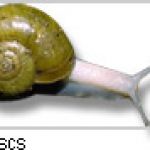Advertisement
Not a member of Pastebin yet?
Sign Up,
it unlocks many cool features!
- Kobold Biology
- Kobold biology is simple. Field inhabiting kobolds have larger, stronger legs that are built for running, and cave kobolds have smaller statures and larger heads. Their limbs are dextrious and more than capable of crafting ingenious traps to hinder adventurers progress through a warren. Their tails are prehensile and more than capable of holding a kobold upright for a short period of time. This could possibly cause damage to their tails if done for an extended amount of time. Kobolds are digitigrade standers. Cold-blooded reptiles, they always like to keep warm wether communally or personally. They control their body moisture through defecation, expelling either wet or dry dung through their anus. Unlike other reptiles, kobolds have something analogous to humans. They have both an anus and vagina in females, not a cloaca. Eggs are expelled through the vagina.
- Kobold eggs are tough and leathery, like a platypus. Their developmental stage is incredibly short, as little as three weeks in fringe cases. A newly hatched kobold can be considered an adult at around three months of life. Kobolds can live to be around 150-200.
- Kobolds have pointed, sharp teeth. When one falls out for any reason, the body of the kobold always regenerates it. This is useful because the diet of any kobold is mineral based and supplemented by the proteins in meat and the vitamins found in certain leafy greens. This means that many city-dwelling kobolds require vitamin supplements which contain the minerals in the rare earths which they would typically ingest in the wild.
- Of Kobolds and Social Habits
- Social habits of a kobold are not easily classified. It appears that women lead the society and the males are used as workers. Kobolds do not breed for life, and many females take on as many as three regular broodfathers. The kobold language, too, is not easily classified. It appears to be a dialect of draconic at first, but it has evolved beyond that. Common kobold words are Nak and Yark.
- Nak: Often used by a kobold as an expression of deep concentration or emotion, typically of frustration. The most accurate human translation would be any common expletive one would would exclaim during a heated moment.
- Yark: Used by kobolds that are scared or otherwise anxious. It's quite literally a kobold barking.
- Kobolds, whether field dwelling or cave dwelling, live very communally. Lots of things are shared, and not much difference in condition of living exists between the top and bottom rungs of kobold society. However, kobolds matriarchs, whether one or several, have everything essentially handed to them on a silver platter.
- Kobolds are cold-blooded creatures, and often huddle or pile atop each other to maintain body warmth in cold temperatures. The field researchers for this book took a liking to these and unprofessionally called them "cuddle-puddles."
- Females have a regular pastime, depending on the kobold society. Observed pastimes have been basket weaving, quilt sewing, tapestry making and forging jewelry. Typically they sing or chant while practicing.
- During mating season, kobold males settle in a nest. They create a nest they think will be the most comfortable for the female they want to attract. Females make mating dances that they think will work to seduce the male they want to attract. Males display their interest in a female in one of two observed ways. They either wrap their tails around the midsection of the female or gently bite their neck. Then the prospective parents lay in the nest with one another to breed.
- Kobolds have been observed to be generally hostile to gnomes and dwarves. Something to do with their religion.
- Kobold Developmental Stages
- Kobolds hatch in communal egg clutches, kept in the most secure part of a warren or settlement. These clutches are under 25 hour watch from the females who are infertile and cannot have children. Their maternal insticts are the strongest and most mature. Kobold egg hatcheries typically have piles of bits and bobs, iron trimmings polished to a mirror sheen, lumps of gold too small to eat. All of these could be a hatchlings first trinket. It is a major social taboo to deny a baby their first trinket. Most kobolds keep this and other trinkets throughout their lives.
- The coming of age ritual for kobolds is different depending upon the culture as well. It is different from gender to gender. Sometimes, and the most common one for males, is mining a diamond from the caves they inhabit. Or for females, weaving a basket that recalls the history of your life.
- Kobold Ingenuity
- Kobolds are a sentient race. As such, they have some degree of territorial instinct and particular ways they mark and protect their territory. For cave dwelling kobolds, they typically create warrens tall enough for themselves with their almost magical sense of which rocks are weak in which areas. These kobolds create traps that cover their warrens and tunnels with dextrious fingers and ingenious minds. Field dwelling kobolds typically mark territory with dry droppings and their own mix of anal juices and urine.
- Kobolds also understand their diets are... expensive and as such will trade for other things en masse with their mined riches. This is how kobolds get dwarven metalworks, magical weapons and armour, books, clothes, and exotic spices. Commonly, kobolds have no actual legal currency. They barter and trade, mostly with barrels of gunpowder. Kobolds purchase, create and use gunpowder by barrels, and prices are listed in warren trading posts as one barrel, two barrels.
Advertisement
Add Comment
Please, Sign In to add comment
Advertisement

